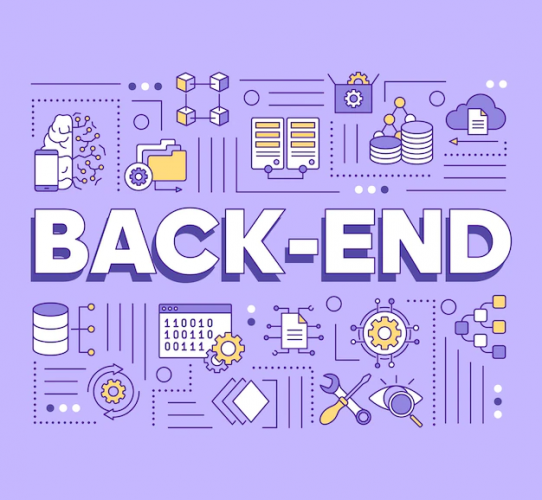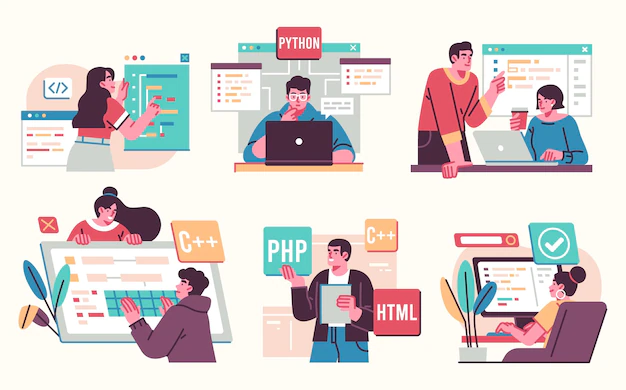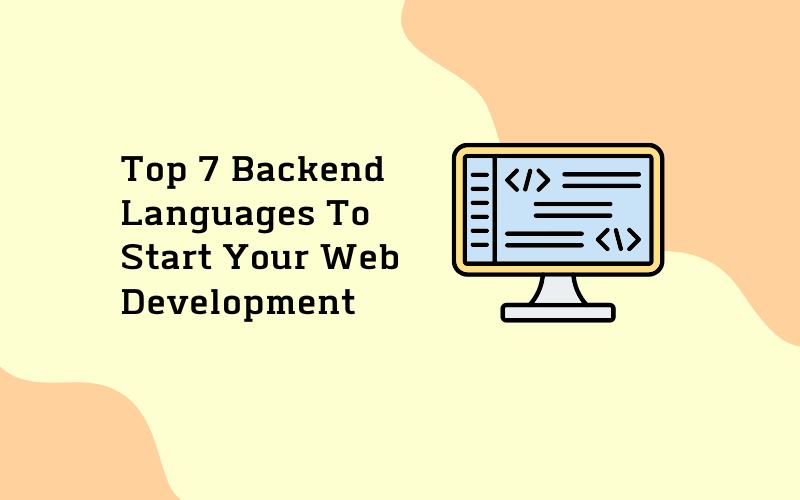
The Web Development Industry is booming. Maintaining a competitive edge in the web development industry requires keeping up with trends. As more and more businesses migrate to the web, the need for talented backend developers grows along with it.
Web development is divided into 3 major categories: Front-end, Back-end, and Full Stack. The work done by these different groups is integral to the success of your website as they each have their specific task, which must come together seamlessly for an effective user experience on any given page or application.
Back-end development is the more technical and involved side of website design. On this front, you need access to different tools that will help with your coding needs – everything from application frameworks for styling sites, components, etc., designed specially by industry professionals who know what they’re doing. This post discusses the seven best backend languages and what makes them special. So if you’re unsure which language to start with, read on.
What is Back-end Development?
Back-end development refers to the coding that happens behind your website and app. Server-side scripting languages are a great way to expand your website’s functionality. It includes all you need to build out databases, servers, and other technologies needed on a project, like API integrations or runtime configuration options to ensure everything runs smoothly when it’s time to publish content live from our site.
Backends are the hidden part of an application that developers can only access. Users cannot approach or see this “data access layer” in your code libraries. It’s typically made up mostly of two languages.
The backend is the part of web and desktop applications that deals with all aspects and functionality. This includes designing logic, implementing rules for data management per business requirements, etc.
Top 7 Back-end Languages:
Language choice is one of the most important decisions you make while coding. It can either help or hurt your application in many ways, so knowing what language will work best for which types of projects has never been more crucial than now. Below is the list of backend technologies list detailing their benefits:
JavaScript:
JavaScript is a widely used programming language for developing web and mobile applications. One type of development in high demand these days, it has become essential knowledge to know how you can code your backend with this powerful yet easy-to-understand coding process.
The fact that it can be used for both front-end and back-end applications makes this tool somewhat special. Learning curves are shortened by not having to deal with different languages, allowing more people to download these tools easily without facing too much difficulty getting started in their new careers.
Its amazing features, like dynamic typing, object-oriented programming, and lightweight scripting, make it the perfect language for backend coding.

Freepik
Python:
Python is a cool and trendy programming language for developing applications. It has an easy-to-use and simple development process, which makes it great for backend work. You can also integrate IoT or machine learning into your app with no problem, thanks to how versatile this programming language seems when you’re looking at integrating new technologies into apps, especially if they involve electronics like sensors or embedded systems.
It has many features that make the process easier and quicker, such as an extensive list of libraries available where you can find what’s needed in your application development needs with just one search engine query.
The versatility of Python means that it’s a great choice for many different types and sizes of projects. From small to large, you can trust the language with all your backend needs.
Ruby:
Ruby is a popular programming language known for its automation capabilities, web scraping abilities, and data processing power. It’s also great at making user interfaces easy to use, so it can be one of the more well-known tools in your arsenal when developing websites or apps with HTML/CSS knowledge already under your belt.
This backend programming language is a versatile tool that can create backend applications of any type and complexity. This means it has something for everyone, whether you need database access.
There are many reasons to choose Ruby as your programming language, but one that might surprise you is how easy it can be for beginners. Being user-friendly was a top priority when designing this open-source framework, making learning more enjoyable than other difficult ones on the market today.
PHP:
PHP is the acronym for hypertext preprocessor, meaning that the code you write in this language will be read by computers directly rather than through a compiler.
PHP is a popular language for creating server-side functionality, which makes deploying your code much easier with deployment tools and capabilities. You can embed it into HTML so that you have an easy time when designing web applications or pages using this powerful but also beginner-friendly tool.
PHP offers the perfect balance of power and simplicity. Beginners can use it yet still have an impactful final product without sacrificing quality or performance. As a result, any bugs in your code will only appear after you have gone through and fixed them, which can encourage new programmers to finish their projects on time.
SQL:
Using structured query language SQL, you can get information from databases and update company records internally. It’s also helpful when working with clients, as it allows them access to their own database systems without needing an IT expert.
Backend developers often use the SQL language to interact with data and often use it for them to run rather than create the foundation of features. Many databases today rely on this type, so learning SQL would be beneficial if you want to understand how retrieval or changes can affect functionality from your software’s back end.
Freepik
C#:
C# is a great language for developing backend applications due to its general-purpose nature. It can be used with many different frameworks and platforms, which makes it an amazing choice if you’re looking at starting your professional career in software development.
The list of libraries for C# is a huge advantage, making it easy to use and solve many problems. If you need help with your backend development or game design, this language will be what gets the job done.
Golang:
Go is an efficient language that makes it easy to find bugs in your code. Its simple and practical syntax allows you the ability for quick backend programming with scalable performance when needed, making Go perfect for any technology project, no matter how large or small it might be.
Golang has been created to make web development easier and more secure so that you can use the language for your backend work comfortably. Suppose you decide that Golangs reliable features are right up your alley. In that case, Beego or Echo will help give stability when developing server-side functions in programs/applications, with these frameworks providing effective toolsets from start-stop candidate frameworks Architectures.
It makes web development easier and more secure, so you can use this reliable language for your backend work without worrying about the security issues that come with other mainstream languages.
The Golang programming platform was designed so that even a non-programmer can be comfortable using it regardless of their level of knowledge about computer languages.
Taking a backend course can be an excellent way to advance your career. If you’re looking for more challenging positions or higher-level jobs, this type of training will likely give them access and open doors in the workplace like no other skill could.
Conclusion:
Start your dream career by completing an online course with experienced instructors who will train you in all the necessary skills.
If you’re looking to get started in backend web development, these are the seven backend languages you should start with. By using these languages, you will be able to build scalable and robust websites. With this knowledge, you’ll be able to build dynamic applications that meet the needs of your users. So what are you waiting for? Start learning today.
